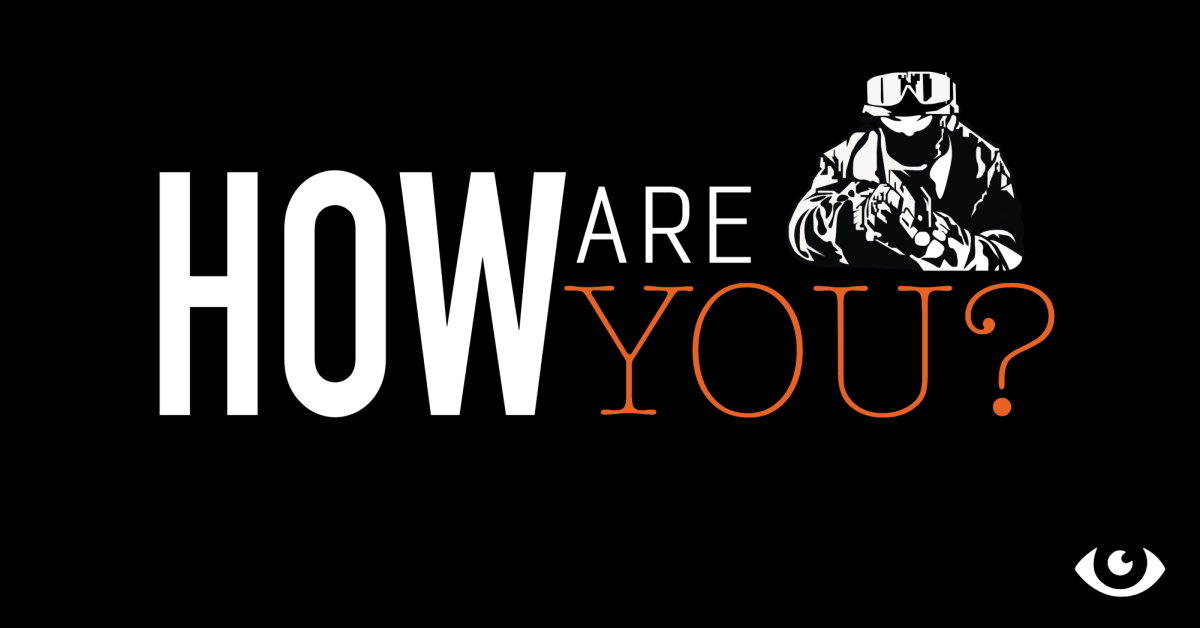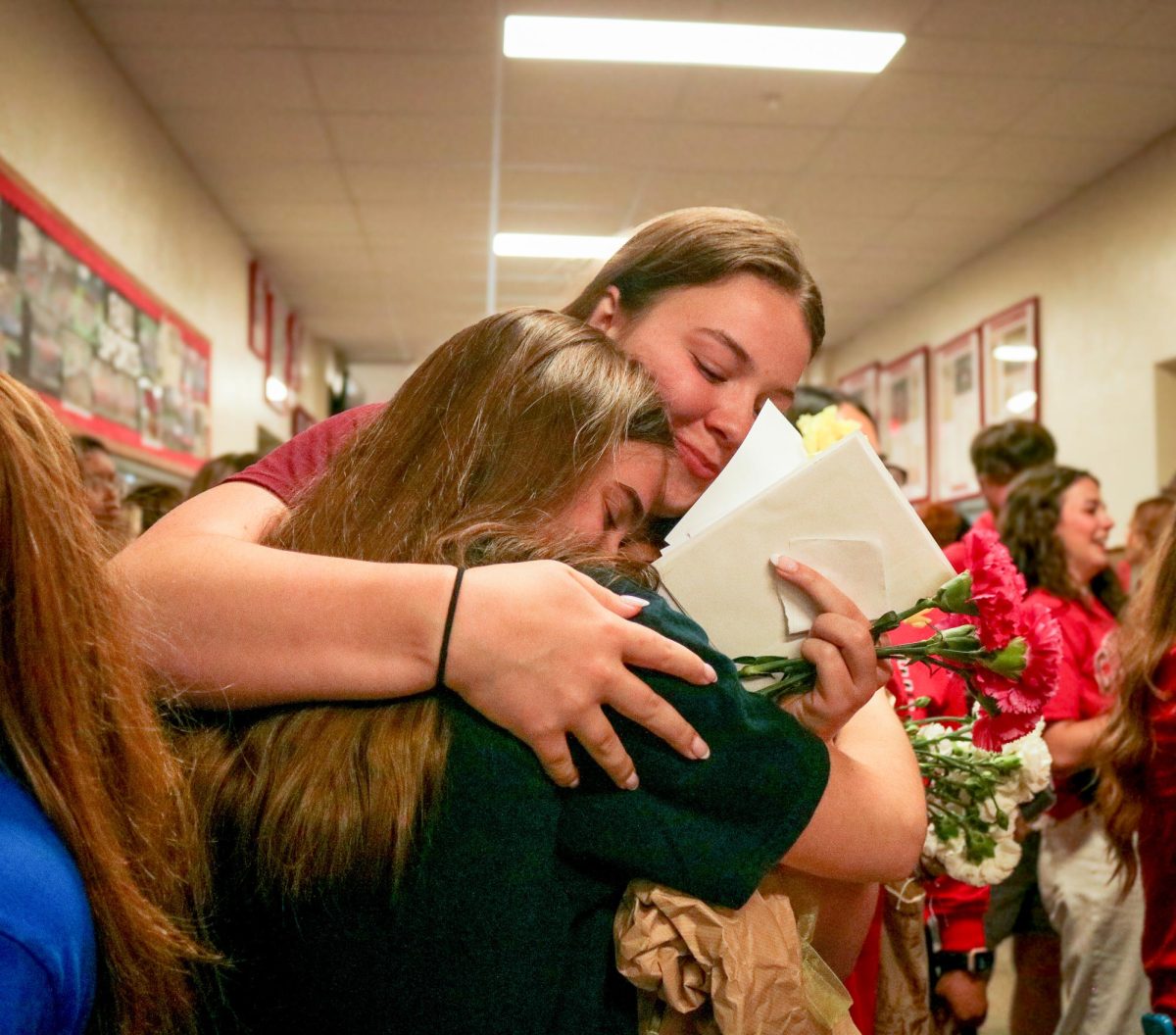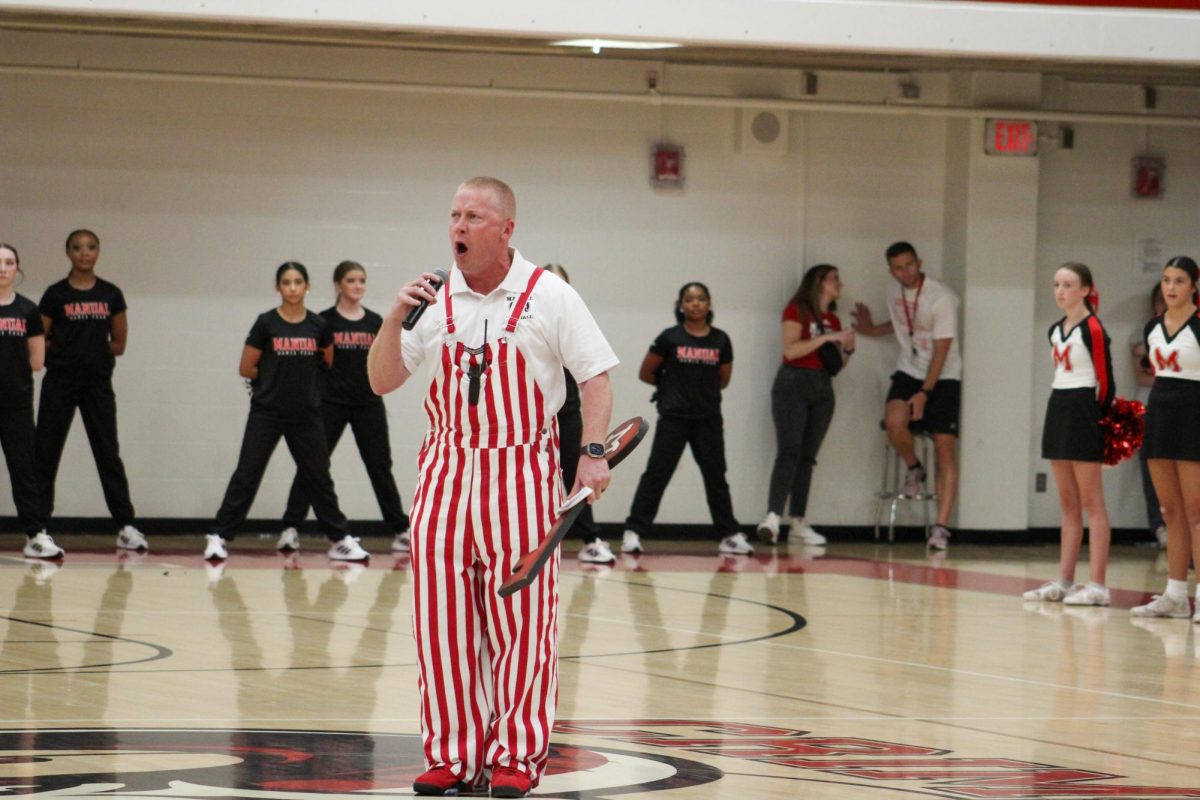This story was submitted by Isabella Shory (9, J&C).
The PA signal sounded on the overhead speakers.
Class had begun a few minutes earlier, and we had just finished singing “Happy Birthday” to our classmate. Countless conversations were echoing around the room, creating a blur that meant few people were paying attention to the announcement above them. I went silent, but my classmates’ laughs and shouts were still erupting around me. I couldn’t hear a word of the announcement. After a few seconds, the room became quieter, then suddenly completely still. “Lock Down! This is not a drill!”
After a few moments of frantic confusion, we packed ourselves into the news broadcasting studio attached to our journalism teacher’s classroom and pushed a ladder and anchor desk against the door. I crouched behind a TV on the ground, crammed in between two classmates. My legs couldn’t stop shaking. A friend hiding next to me asked to use my phone to text her mom.
After nearly an hour of crouching in darkness and breathing rapidly, a SWAT officer strapped with a massive rifle entered our classroom. It was a false alarm, he told us.
“I love you,” she sent.
Our minds had all gone to the worst-case scenario: duPont Manual High School would be the next name in the headlines, haunted by tragedy.
After nearly an hour of crouching in darkness and breathing rapidly, a SWAT officer strapped with a massive rifle entered our classroom. It was a false alarm, he told us.
The case was an instance of swatting, a form of harassment in which a caller falsely alerts law enforcement of an emergency to attract a significant response, typically by a Special Weapons and Tactics (SWAT) team. These callers, referred to as “swatters,” often call on non-emergency lines and use free internet calling services, such as TextNow, hindering the ability of police to track down the suspect. Calls typically consist of bomb threats or active shooting reports and can target businesses, homes of politicians or, increasingly, schools.
In 2023, 731 school swatting incidents occurred in the United States, compared to 348 events involving an actual gun on school grounds. In Kentucky, falsely reporting an incident resulting in an emergency response is a Class D felony, meaning those convicted face one to five years in prison. The FBI announced in 2022 that they believed many threats and false reports were coming from overseas sources.
Louisville-based security consultant Jack Plaxe has advised corporations, government agencies and school systems on dealing with threats. He explained in an interview that swatting originated in the online gaming community, where a caller would report a fake emergency at an opponent’s home to attract a police response and prevent the player from achieving a high score, often during a livestream.
“The trolls that are making this happen are treating it like it’s a game, but it really isn’t,” he said. “It’s deadly serious.”
In some swatting cases, a false danger can easily become a real one. Plaxe says when heavily armed police forces enter a scenario aiming to neutralize a perceived threat, accidental use of force is a significant risk.
“People are, you know, potentially in jeopardy here,” Plaxe said. “There have been cases where people have been shot and killed in these types of situations.”
In addition to the physical dangers, a tense lockdown and the sight of armed SWAT officers in school hallways can be deeply traumatic for students and teachers. Swatting targets the fear that debilitates this generation’s students: a school shooting. In 2018, Pew Research reported that 57% of students are worried about a shooting at their school. Even when the danger reveals itself to be false, the fear students experience is real.
A member of the police department in Saginaw, Michigan, where a high school received a swatting call, described the incidents as “terror without a body count,” according to the Washington Post.
On a Wednesday morning this March, just as students were beginning to arrive, Ballard High School received a bomb threat through a phone call. The school’s nearly 2,000 students were diverted to the football field as tension built.
“It was mixed emotions,” said Viviana Davis, a freshman. Many students weren’t concerned about the threat, “…but then some people were actually seriously worried.”
After officers learned of similar threats in the community, they discovered the threat was a hoax and part of a nationwide swatting incident. After spending around an hour on the bleachers, the students began their classes, having missed nearly all of first period.
The frequency of false threats at the school caused many students to feel little concern about the situation. “We kinda knew that nothing was going to happen ‘cause we have had these threats happen for a while,” said Nathan Pennell, a sophomore.
This desensitization is not uncommon. As school shootings and hoaxes become more frequent, students may feel numb in the face of a threat, leaving them vulnerable during incidents of real danger.
“It’s like a normal thing now,” said Pennell.
While it may feel that way to some students, the incidents have impacts far beyond the normal. Davis has reported witnessing more large fights than usual.
“I think three fights broke out that day,” she said. “These are big fights where you’re in passing period, and then all of a sudden, outside the door, your door’s getting banged against…”
In the incident I experienced on November 8 at Manual, a caller claimed to be the victim of an active shooting on the second floor of our school. Within seconds of the lockdown announcement, students barricaded the doors with desks and hid in closets, following the protocol practiced during years of active shooter drills.
It was probably one of my most challenging days ever as a teacher in 16 years.
— Vanessa Hutchison
Vanessa Hutchison, my former journalism teacher at Manual, was hiding in the dim broadcast studio with me and her other students. To attempt to put on a brave face, she had to suppress her own terror in the situation.
“We’ve just heard so many stories about shootings, and I thought that this was when it was going to happen to us,” she said. “It was probably one of my most challenging days ever as a teacher in 16 years.”
For weeks after the swatting incident, Hutchison’s anxiety from the situation continued to overwhelm her. The situation was ultimately an influential factor in her decision to leave her position the following semester.
“I wasn’t able to give my whole self to the job in the way that you kind of have to as a teacher. It got in the way of being the person that I needed to be for my students.”
Hutchison believes many students experienced similar anxiety and some still feel the impacts. Diana Gutierrez (9, VA) was hiding in the corner of her art class during the lockdown, and trauma from the incident still affects her.
“I literally go to school thinking, ‘what if they do it again but this time it’s real. Like I get so scared whenever the announcements come on,” she said over direct message.
To prevent these situations, Plaxe advises students to report any peers possibly engaging in swatting to school administrators since he believes some calls originate from students themselves.
He also recommends that schools establish strong relationships and a direct line of communication with law enforcement to allow for a more efficient response.
“The 911 call center can call to say, we’ve received a report of an active shooter at your location. Can you confirm this? And so by opening up that line of communication, they might be able to find out that it was a bogus call.”
When reflecting on the November lockdown, Hutchison paused.
“I wish that we could get to a place in our country where students and teachers don’t have to be afraid for their lives at school,” she said. “We wouldn’t have that sense of terror from the hoax if we didn’t feel like it was gonna be real.”













